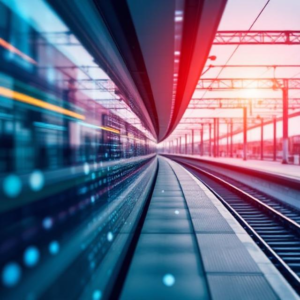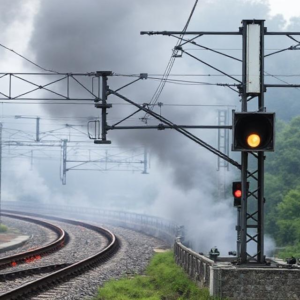What is Train Data Recording?
Train data recording is the process of collecting and storing important information about the train’s operations while it is running. This information includes data like the train’s speed, location, braking actions, and more. It’s like having a logbook that automatically records everything happening with the train as it moves.

This data is essential for ensuring the safety of the train, for troubleshooting problems, and for improving operations.
Why is Train Data Recording Important?
- Safety:
- If something goes wrong, like an accident or sudden stop, the recorded data can help investigators understand what happened. For example, was the train going too fast? Did the brakes work correctly? Were there any signals ignored? The recorded data provides answers.
- Maintenance:
- By recording data about the train’s systems (like its engine, brakes, or doors), railway operators can monitor the train’s health. This helps to schedule maintenance before a problem becomes serious. For example, if a part is malfunctioning, the system can alert the maintenance team.
- Performance Monitoring:
- Train operators and companies can use the recorded data to track how efficiently trains are running. This helps improve timeliness, reduce fuel costs, and optimize train schedules.
What Information is Recorded?
Some of the key data recorded during train operation includes:
- Speed: The train’s current speed at any given time.
- Location: Where the train is, usually tracked using GPS or similar technologies.
- Braking Data: Information about when and how hard the brakes are applied.
- Signal Status: Whether the train has passed any signal lights (green, yellow, red).
- Engine and Mechanical Data: Information about the health of the engine, brakes, and other mechanical parts.
- Time Data: The time stamps when certain actions take place, like when the train enters a station or passes a signal.
- Communication Data: Any messages or commands sent between the train and the control center or other trains.
This data is collected automatically and stored in a device called a Train Data Recorder (TDR), which works like the black box in an airplane.
What is the Train Data Recorder (TDR)?
The Train Data Recorder (TDR) is a device that records all the data about the train’s movements and operations. It is similar to the black box found on airplanes. It collects and stores data from the train’s sensors and systems, which can later be analyzed.
The TDR is built to be rugged and safe so that it can survive accidents. This ensures that the critical data can be accessed later, even if there’s an issue or incident.
What is Train Communication?
Train communication refers to the exchange of information between the train and other systems, like the control center, other trains, and trackside equipment. Communication is crucial for managing train movements, ensuring safety, and keeping everything running smoothly.
Types of Train Communication
- Train-to-Control Center Communication:
- The train communicates with the control center to report things like its location, speed, and status. The control center uses this information to monitor and manage train traffic.
- The control center can also send instructions to the train, such as telling it to slow down, change tracks, or stop at a station.
- Train-to-Train Communication:
- Trains can also communicate with each other, especially when they are close together. For example, if one train has to stop suddenly, it can send a message to the following train to slow down or stop too.
- Train-to-Trackside Communication:
- The train communicates with trackside equipment like signals, level crossings, and switches. This communication helps the train know if it should stop or proceed, or if there is a problem on the track.
Modern Train Communication Systems
- GSM-R (Global System for Mobile Communications – Railway):
- This is a communication system specifically designed for railways. It allows train-to-ground communication (between trains and control centers) and ensures safe and reliable communication.
- GSM-R allows trains to send data about their location, speed, and other important information, while also receiving instructions from the control center.
- CBTC (Communication-Based Train Control):
- CBTC is an advanced communication system used to manage train movements in real-time.
- It allows for real-time monitoring of trains and provides automatic control based on the data it receives. For example, it can automatically slow down or stop a train if it’s going too fast or approaching another train too closely.
- Wi-Fi and 5G Communication:
- As technology improves, modern railways are using Wi-Fi and 5G networks to enable high-speed, reliable communication between trains, stations, and control centers.
- These technologies also allow passengers to enjoy internet services on board, while the train still communicates efficiently with the rest of the network.
How Does Train Data Communication Work Together?
When we combine train data recording and train communication, the railway system works as follows:
- Continuous Data Collection:
- As the train moves, its systems constantly collect data about speed, location, and condition. This data is recorded in the Train Data Recorder (TDR).
- Communication with Control Centers:
- The train sends updates about its location and speed to the control center. The control center also sends instructions back to the train (such as adjusting speed or stopping).
- Emergency Alerts:
- If there’s an emergency (like a brake failure or signal problem), the train can send alert messages to the control center or to nearby trains. The control center can then take action to prevent accidents or delays.
- Real-Time Adjustments:
- The control center can monitor the train’s performance and make real-time adjustments based on the data received. For example, if a train is running late, the control center can adjust the schedule or make changes to avoid delays.
- Post-Incident Analysis:
- If there is an accident or incident, the recorded data from the TDR can be reviewed to understand what went wrong. This helps improve safety protocols and prevents future accidents.
Benefits of Train Data Recording and Communication
- Safety:
- Continuous data collection and communication make the system safer by allowing operators to monitor and respond to situations in real-time.
- Efficiency:
- Communication between trains, control centers, and trackside equipment helps improve train scheduling and traffic management, reducing delays and increasing efficiency.
- Maintenance:
- By recording data about the train’s condition, operators can predict when parts will need maintenance or replacement, preventing breakdowns and reducing repair costs.
- Post-Accident Investigation:
- If something goes wrong, the recorded data provides a detailed account of the incident, helping investigators understand the cause and prevent future issues.
Conclusion
In simple terms, train data recording and communication work together to make the railway system safe, efficient, and reliable. Data is constantly collected about the train’s performance, location, and condition, and this data is communicated to control centers, other trains, and trackside equipment. This system allows for real-time monitoring, adjustments, and emergency responses, helping to prevent accidents and ensure smooth train operations.
Keywords: Train communication, Railway













